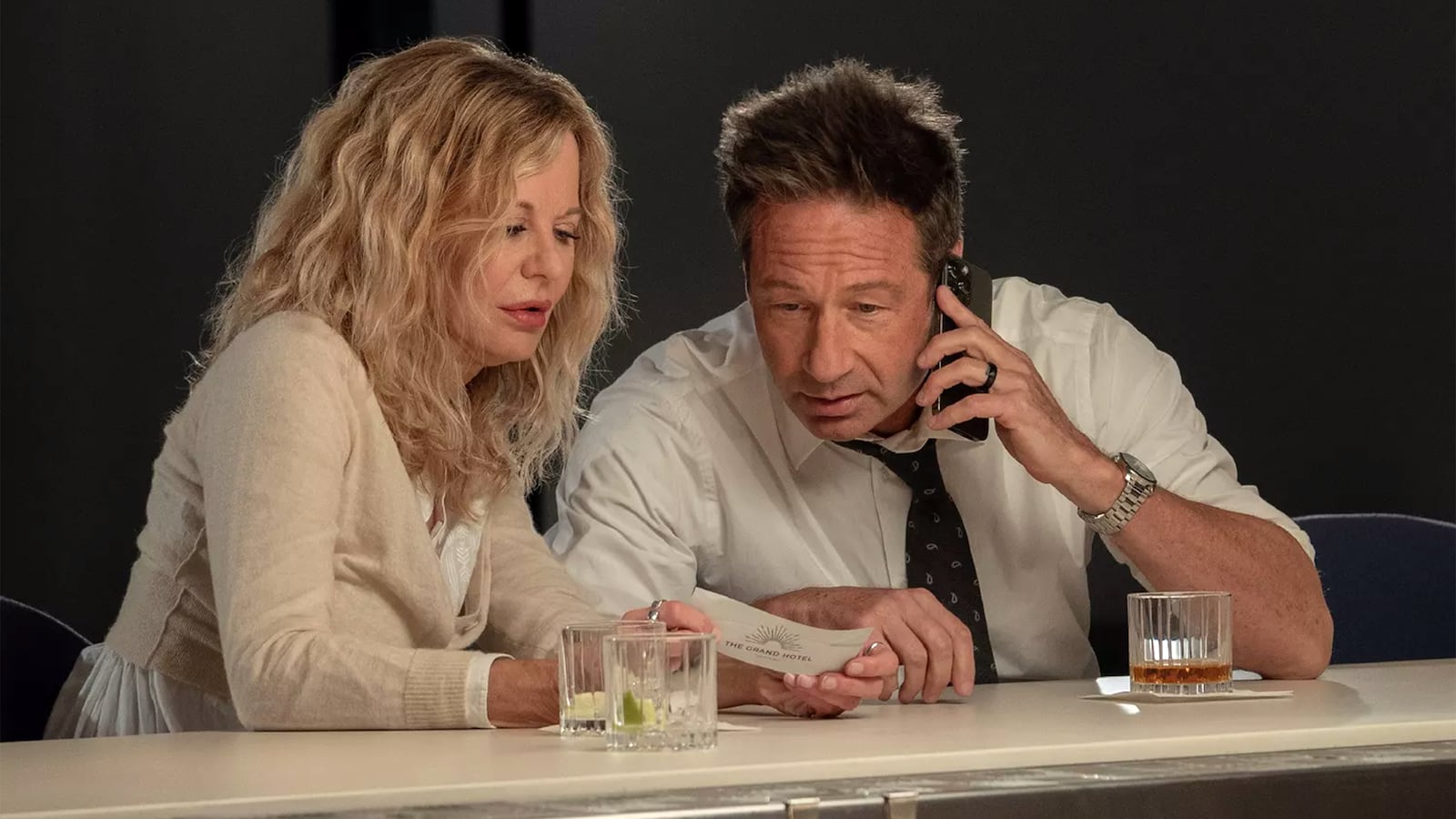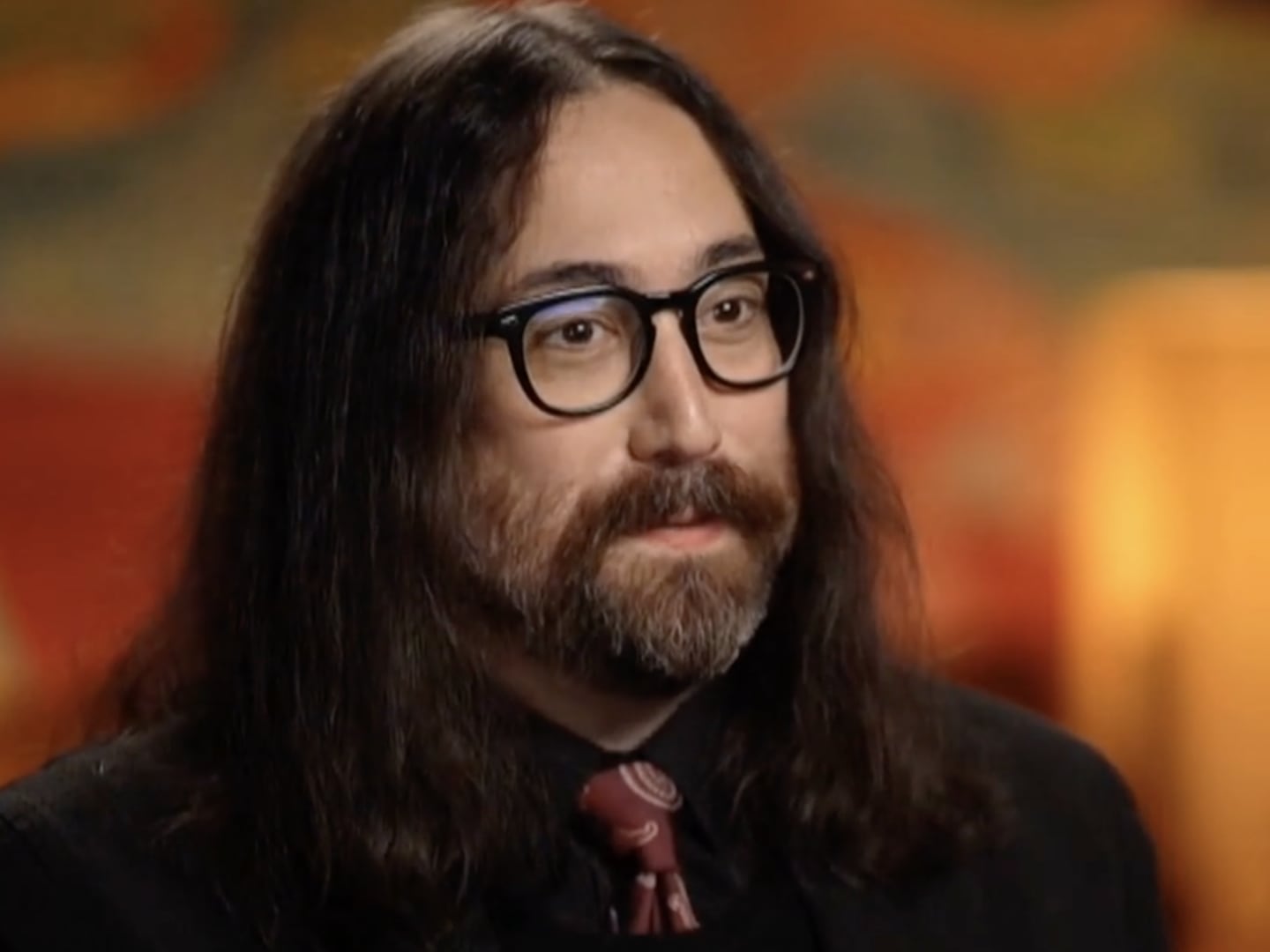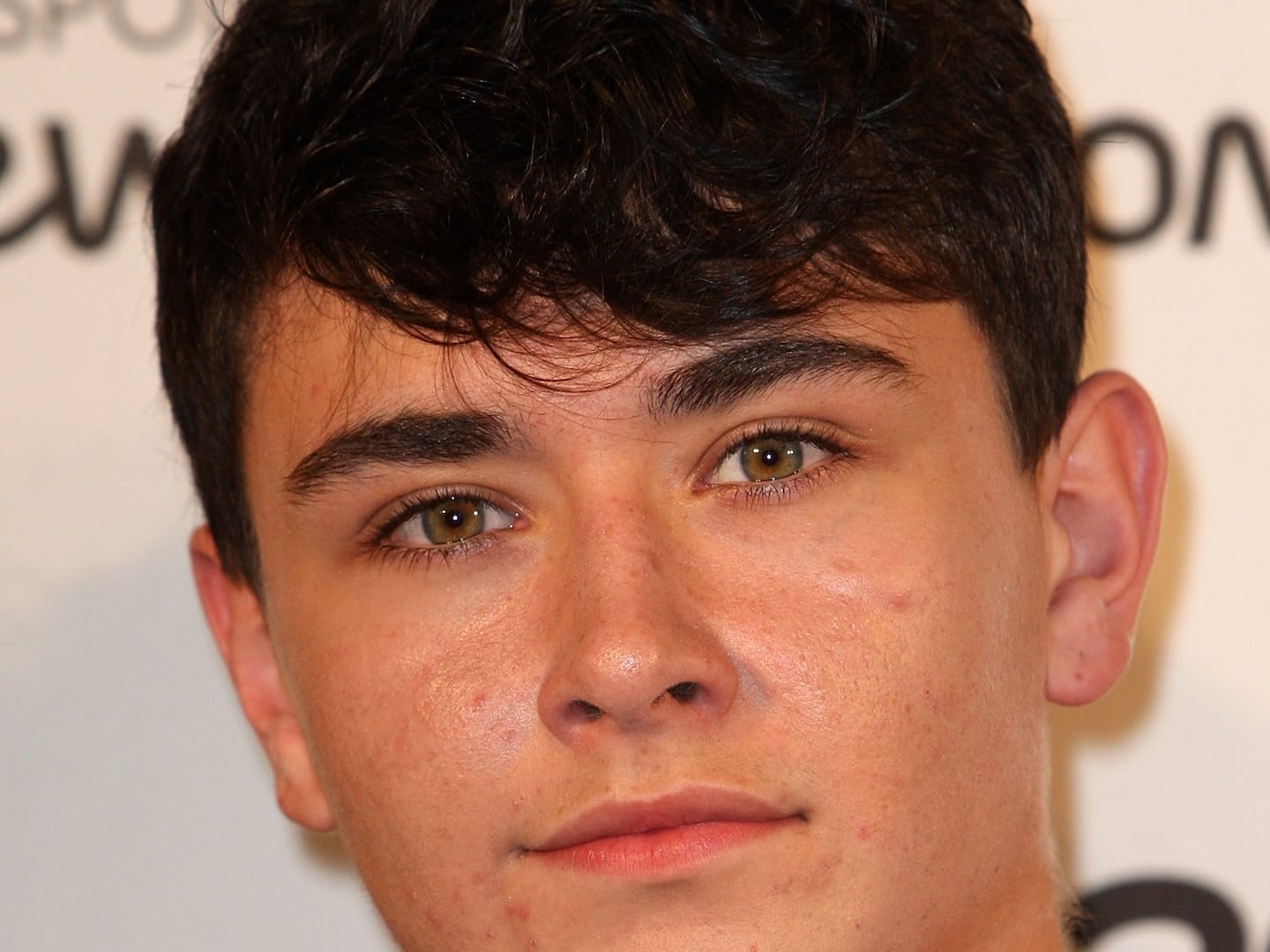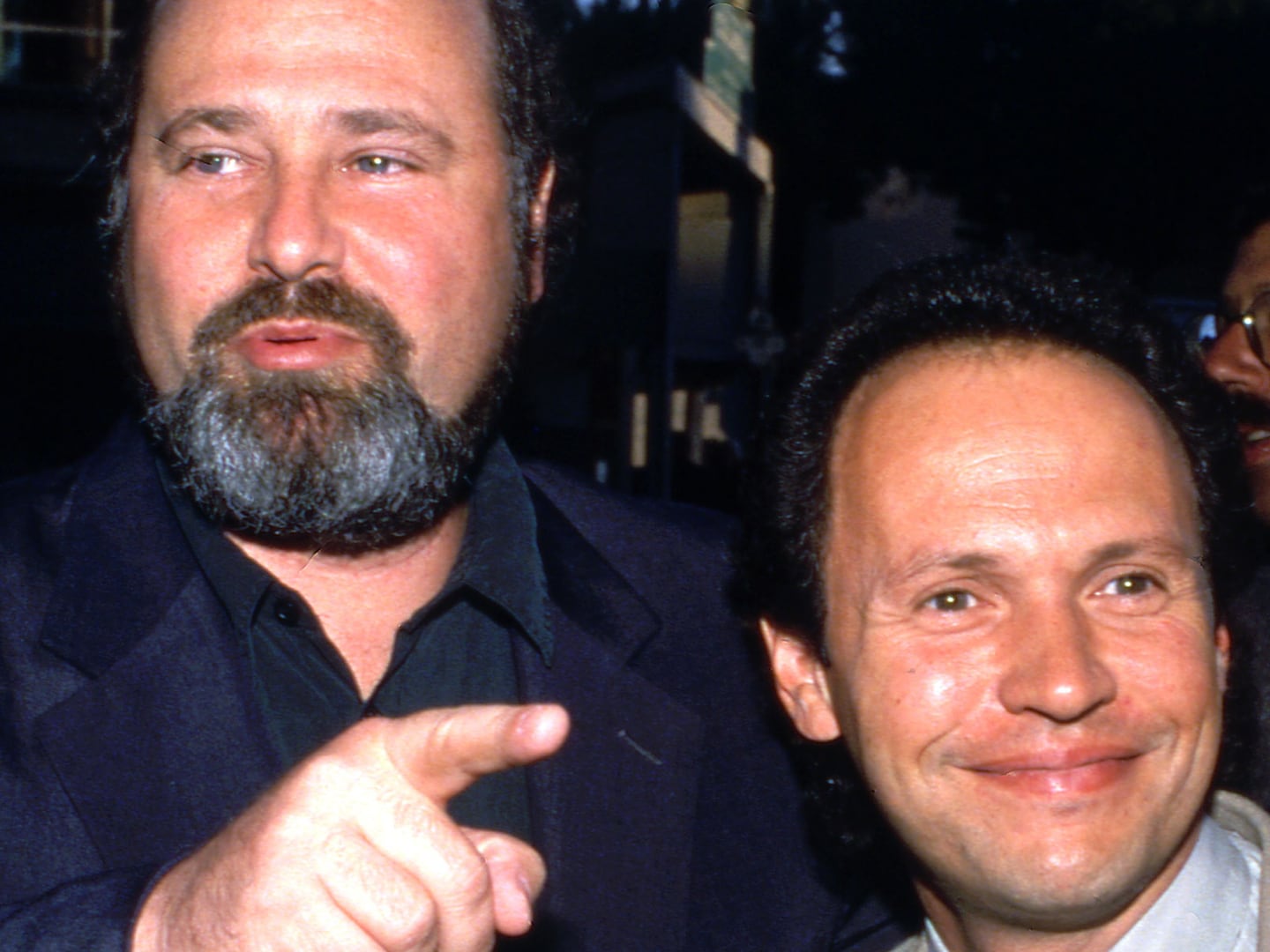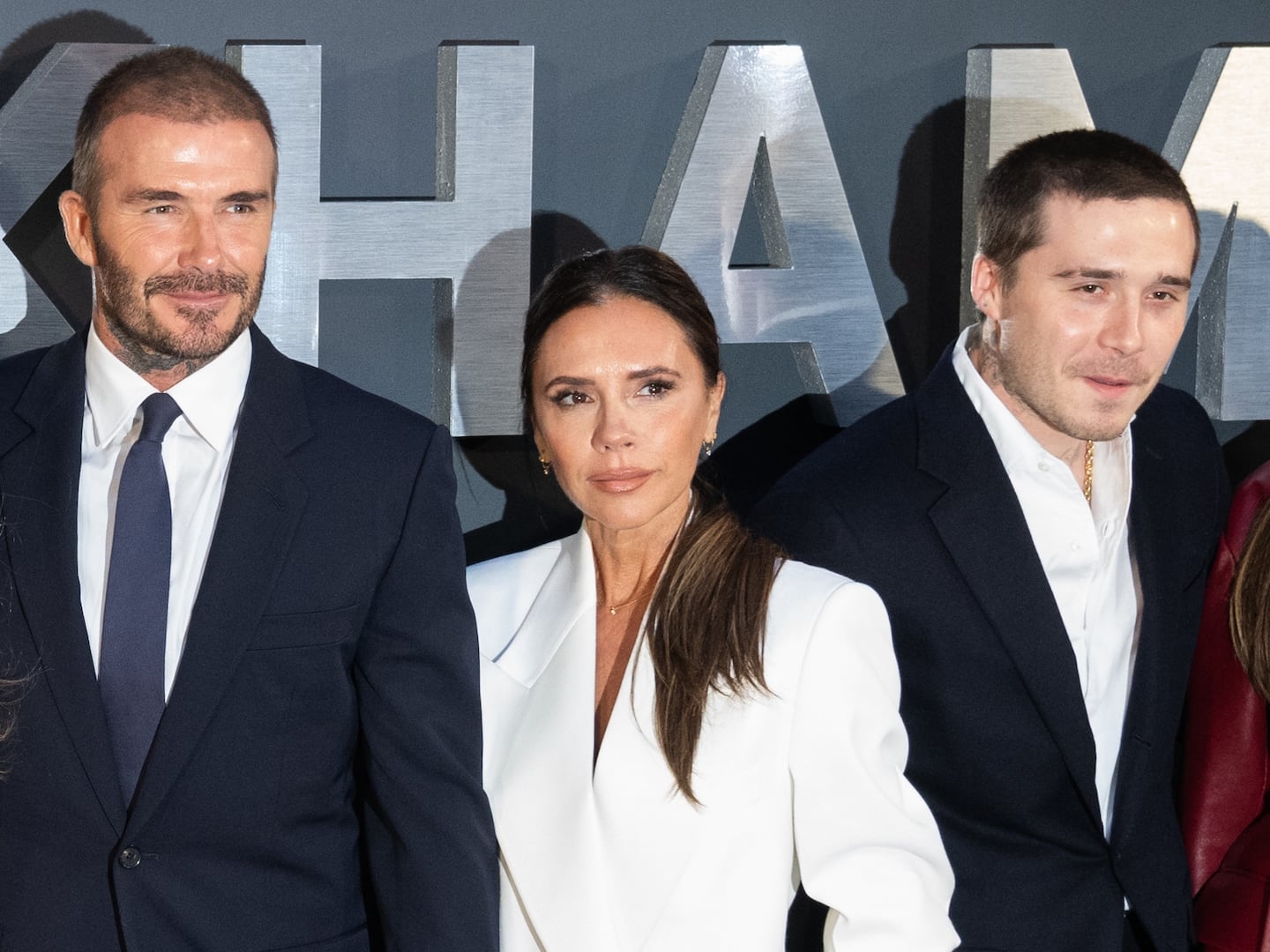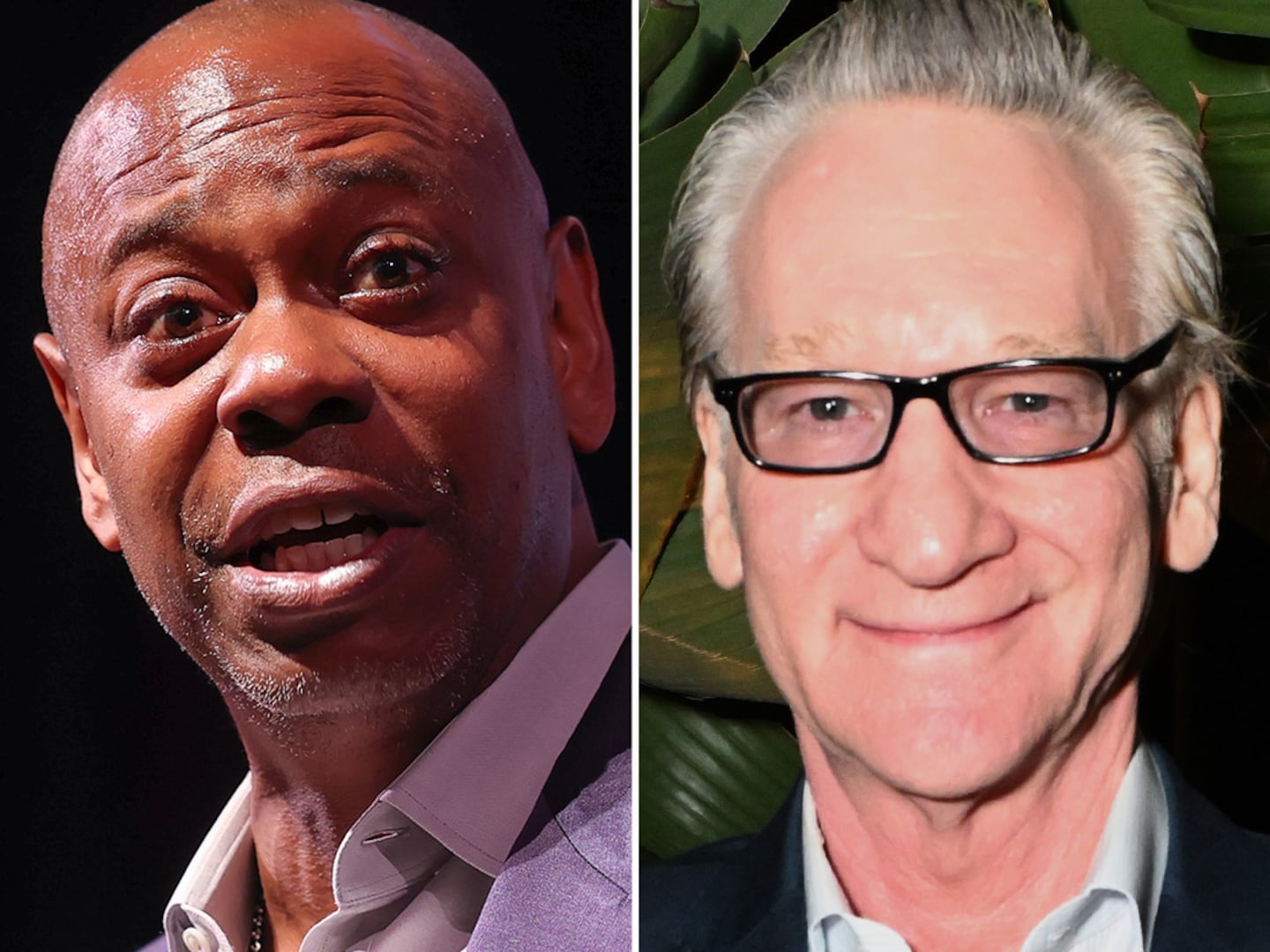You may think you know what a Meg Ryan rom-com is going to look like. You might even think you’ve got her latest one—What Happens Later (in theaters Nov. 3), which also happens to be her first role in almost a decade—pegged from half an hour into its run. The film, about torrid ex-lovers stranded in the same regional airport on Leap Day, has an air of surreality to it. It’s so small, efficient, and hyper-focused on the dynamic between its two stars that one can’t help but wonder if something truly catastrophic has happened outside of the floor-to-ceiling picture windows of this provincial terminal. “Maybe this isn’t a Meg Ryan rom-com after all,” you’ll say. “Maybe it’s a Meg Ryan dystopian thriller.”
But even that guess would be incorrect. What Happens Later has far fewer twists than its dreamlike atmosphere purports, though it happily teases its audience until its final moments. For all of its build-up, the movie ultimately deflates with a disappointing squeal, like a half-blown-up balloon that someone abandoned because finishing the process felt like too much work. While it’s not a complete and total dud—there is romance, there is comedy, and there is electric chemistry between Ryan and her equally game co-star David Duchovny—What Happens Later tries to do too much with too little, devolving into a saccharine misfire that not even a genre legend can hold up.
We’re led to believe from the film’s opening moments that, although these characters are completely different, they’re ultimately meant for each other. This is conveyed bluntly by two CGI snowflakes—famously a magical weather element of which no two are the same—tapping into one another in the skies outside that aforementioned, unnamed regional airport. It’s corny, but we’ve come for corny, and we’d prefer it served on a platter rather than have portions of it siphoned to us in incremental bits. It’s just unfortunate that, like all delicious things, it’s easy to fill up on corny without realizing it, until we’ve been so overserved that there’s nothing left to do but sigh and wait for the glutted feeling to pass.
Though it’s a beautiful sight, the emergent snowstorm swirling overhead spells trouble for Willa (Ryan) and Bill (Duchovny), who both happen to be catching a connection at the same small airport at the exact same time. When they spot each other, the two exes instantly feel that same cosmic pull that brought them together some 25 years prior. Defaulting to some initial small talk amuses them, given their history. “We used to make fun of the small talkers,” they say, laughing, before embarking on a journey into their mutual past—slowly losing their marbles along the way in the confines of the strange space they’ve found themselves.
What Happens Later was adapted from Steven Dietz’s play Shooting Star, and maintains much of its source material’s distinctly theatrical ambience—unfortunately, to the film’s detriment. If you’ve made casual chit-chat with an acquaintance or distant family member, you’ve probably found common ground in discussing how airports are liminal spaces: places where people briefly exist in the transitional period between two states. What Happens Later is founded on that collective idea, and does its best to muster all it can out of repeated jokes about airport muzak and generic pop tunes over loudspeakers, service desks without any service, and electrical outlets that don’t work (and maybe never have).
But it’s not long before the airport setting becomes banal, and Ryan and Duchovny can only do so much to make viewers forget that they’re circling the same spots in the building, over and over again. The pair’s first walk-and-talk scene is genuinely intoxicating, with Willa and Bill trading quick-witted barbs as comfortably as they do warm memories. There’s even a decent bit of laughs to be had; Ryan and Duchovny have sublime comic timing and the kind of dynamic connection that few rom-coms are able to supply anymore. These two seasoned industry vets would be perfectly capable of holding down a great romance, but once What Happens Later begins to dip into something slightly more fantastical, even its old pro co-stars lose their footing.
As much as it kills me to say it, part of that blame lies squarely on Ryan, who not only co-wrote the script but directed the film as well. While Ryan’s direction is perfectly satisfactory—she stages some interesting shots, particularly one in the airport diner, which does not last nearly as long as it should—it lacks the same flair that she has as a performer. When Ryan is on screen, she’s as magnetic as they come: charming, ebullient, and sincere. But behind the camera, Ryan’s lack of style hampers what could be an interesting premise, as if her naturalism as an actress is clashing with her determination to prove herself as a director.

Ryan’s attempts to craft something unique war with the film’s screenplay, creating an uncanny mood that lacquers itself against What Happens Later for the latter half of the film. Inexplicably, there is an airport announcer voice who can directly respond to Willa and Bill. There are no bartenders—or seemingly any security personnel or employees at all—to keep the two old flames from grabbing some booze from behind the bar. Eventually, the two are left entirely to their own devices, with not another single soul in the building to stop them from doing donuts with the airport golf carts. You’ll be forgiven for wondering if they’re in purgatory, but the reality is something far stranger, seeing as all that peculiarity results in something not so strange after all.
It’s when Duchovny and Ryan are given chances to go deeper into their characters that the film begins to shine through its blizzard of ideas, despite the beats of their sullied relationship being largely conventional. None of the musings about life, relationships, or parenthood here are particularly revelatory. But though they may be stale, the film’s two leads do a hell of a job selling clearance bin plot points at a marked-up price.
The movie is certainly an admirable effort—especially when considered as a tribute to the late Nora Ephron, Ryan’s friend and longtime collaborator, whom she credits at the film’s conclusion. But good chemistry and a few chuckles aren’t enough to get What Happens Later off the ground—especially when the movie wraps with one of the hokiest final shots in recent memory. There is, however, a kernel of something there. And though the film isn’t the comeback vehicle that fans of Ryan had been hoping for, it should serve as irrefutable proof that her brand of affable charm can make just about anything worth sitting through, if only while waiting for a connection to something better.

